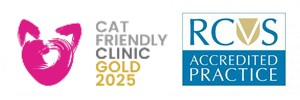Endoscopy allows clinicians to evaluate inaccessible areas of the body via a long, narrow flexible camera. The videoendoscopy system displays the medical image real-time on a TV screen, so that the vet and owner are able to observe the findings directly. The most common procedures performed with videoendoscopy include assessment of the upper airway in cases of suspected breathing abnormalities or nasal discharge. The longer gastroscope is passed into the stomach via the nasal passages to evaluate for gastric ulcers. Videoendoscopy is also used to gain direct visualization of the sinuses in the head, to evaluate the urethra and bladder and the cervix and uterus in mares.
Recent developments in technology have resulted in the development of an over-ground endoscope to help in assessment of the upper airway. This system allows the endoscope to be placed inside the horse’s respiratory tract whilst the horse is being exercised. Images are transmitted to the vet so we are able to view what is happening to the horse’s airway during the exercise test. This increases our ability to diagnose the cause of abnormal respiratory noise or poor performance in equine athletes and determine the best treatment plan.


